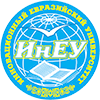Annotation:
The main thesis of the proposed research is that in modern conditions of globalization and the development of the information society, approaches in civil law turnover to goods and, accordingly, to the protection of human rights are radically changing. As part of the development of electronic commerce, information has also become a commodity, which causes many different disputes in science. Perhaps this is due to the fact that information is a relatively new object for the science of civil law, compared with objects of law that have been known for more than two thousand years, such as a thing and are considered classical. Information, confidential information (trade secrets and know-how) belong to the so-called objects of law, and civilists, relatively speaking, call them atypical, since they have become known to civil law not so long ago. The development of economic relations, as a rule, requires the development of a new, appropriate array of legal norms, which in the future may form a separate civil law institution that does not contradict the Constitution of the Republic.
The purpose of the study is to develop its own conclusions based on a comprehensive civil law analysis of the legal nature of e-commerce relations, its essential features of civil law regulation of relations in the field of e-commerce and information; to provide suggestions and recommendations for improving legislation in this area. In addition, the article pays attention to the protection of the rights of consumers of e-commerce services. When conducting the research, the author was guided by the following methods: general scientific (historical, formal-logical, system-structural, system-comparative, etc.) and special legal (formal-legal, comparative-legal and others).
The article substantiates that the evolution of the carrier of the written form does not lead to the emergence of a new form next to the written one: the peculiarity of the very fixation of the will in electronic data transmission means is not only the creation of a text document, but also the possibility of fixing the will with the help of sound, video files, graphic files. The doctrine of civil law has formulated a conceptual approach, according to which the possibility of the emergence and existence of the right of ownership of information is denied. In the civil sense, information as such cannot be exploited as a thing, or used as a result of intellectual, creative activity. The article concludes that the relations of an individual entrepreneur arising from contracts aimed at purchasing, ordering goods (works, services) for the purpose of satisfying personal, family, household, cultural and other personal household needs not related to the implementation of their entrepreneurial activities should be subject to legislation about consumer protection.
Year of release:
Number of the journal:

 English
English Русский
Русский Қазақ
Қазақ